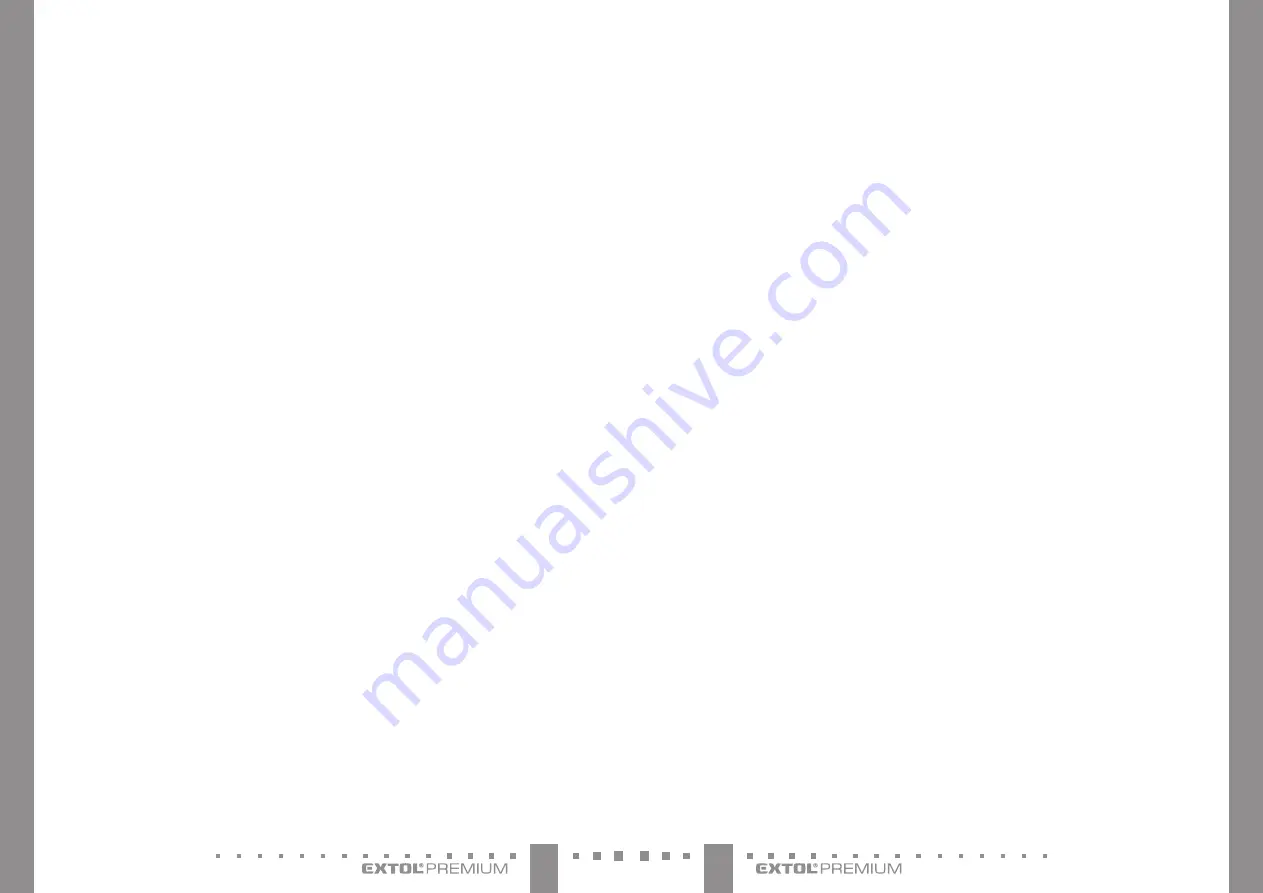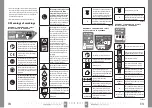
89
88
EN
EN
The following applies:
- When using the tool, it is recommended that the user
maintain a comfortable yet ergonomic position. It is
recommended to maintain a safe stance and to avoid
inappropriate positions or positions where the user is
out of balance.
- If the user starts suffering from symptoms such as
permanent or repetitive discomfort, pain, tremors, tin-
gling, desensitisation, burning feeling or stiffness, then
these warning symptoms should not be ignored. The
user should consult this with a qualified healthcare pro-
fessional taking the overall activities into consideration.
- The manufacturer must provide information about
residual hazards that pertain to repeat work hazards
such as the duration of use with respect to the work
positions and forces, and this information is available in
EN 1005-3 and EN 1005-4.
- A risk assessment should focus on muscle problems/
problems of the locomotory system and primarily based
on the presumption that the reduction of problems is posi-
tively influenced by the reduction of fatigue during work.
HAZARDS ARISING
FROM ACCESSORIES AND CONSUMABLES
The following applies:
- The user‘s manual must specify the prescribed accesso-
ries and consumables.
- Prior to replacing accessories such as the safety contact
mechanism or when making adjustments, it is nece-
ssary to disconnect the power source, such as air, gas
vessel or batteries or battery packs.
- It is necessary to only use the size and type of accesso-
ries provided by the manufacturer.
- Only lubricants recommended by the manufacturer may
be used.
- The specifications of the joining components that may
be used must include the minimum and maximum
diameter, length and characteristics of the joining com-
ponents such as dimensions (calibre) and angle.
WORKPLACE HAZARDS
The following applies:
- Slipping, tripping and falls are the main causes of injury
at the workplace. Beware of slippery surfaces caused
by the use of tools and also of the danger of tripping on
hoses carrying compressed air.
- In unknown locations, movement should be performed
with care. There may exist hidden hazards such as
electrical wiring or other utility lines.
- This tool not intended for use in potentially explosive
environments and is generally not insulated against
contact with live electrical conduits.
- The workplace must be checked for electrical cables,
gas pipes, etc., which could present a hazard as a result
of the pneumatic tool being used.
HAZARDS CAUSED BY DUST
AND DUST EXTRACTION
If the tool is used in an area where there is static dust,
then this dust may manifest itself as damaging and
present a hazard. The following applies:
- Risk assessment should include the dust created during
the use of the pneumatic tool and the potential of exis-
ting damaging dust.
- The exhaust must be setup in such a manner that the dama-
ging effects of dust in a dusty environment are minimised.
- If hazards result from dust or dust extraction, the priori-
ty must be to reduce them at the point of their emission.
HAZARDS RESULTING FROM NOISE
- Exposure of unprotected hearing to high levels of noise
may cause permanent, incapacitating hearing loss and
other problems such as tinnitus (ringing, humming,
whistling or roaring in the ears).
- For these hazards, the basic requirement is the assess-
ment of risks and implementation of suitable measures
for managing these hazards.
- Suitable risk reduction management methods may
include measures such as noise dampening materials
preventing the resonance of workpieces.
- Suitable hearing protection must be used.
- No modifications may be made to the driving tool.
Modifications may lower the effectiveness of safety
measures and increase the risks for the user and/or
persons in the near vicinity.
- The nail/staple gun is not intended for driving nails/staples
into hard surfaces such as steel or concrete! When driving
nails/staples into materials on a steel, concrete, etc. base,
it is necessary to apply a greater downward force due the
greater recoil and to prevent the gun from slipping.
- The safety instructions must be kept for future reference.
- The tool must not be used if it is damaged.
- When handling the joining components, particularly
when inserting and removing them, it is necessary to
proceed with care, since the joining components may
have sharp tips, which could cause injuries.
- Before using it, always check that the tool is not cracked,
incorrectly connected or that it has no worn out parts.
- The user should not act hastily. The tool may only be used
in a safe work location. The user must maintain a proper
posture and balanced position for the entire time.
- Persons in the vicinity should remain at a sufficient distan-
ce (if the work is being performed in a location, where
there is a possibility that people may walk by). It is nece-
ssary for the user to clearly designate his/her work area.
- The user must never aim the tool at one‘s self or at
other people.
- It is necessary to only use gloves that provide adequate
touch and feel and enable safe operation of the triggers
and any adjustment elements.
- It is always necessary to use the auxiliary handle (if supplied).
- An idle position must be specified.
EJECTION HAZARD
The following applies:
- When removing joining components, performing
adjustments, releasing jammed parts or when replacing
accessories, the driving tool must be disconnected from
the power source.
- During work, it is necessary to proceed with care to
ensure that the joining components correctly pass
into the material and cannot be deflected/erroneously
directed at the user and/or persons in the near vicinity.
- During operation, it is permitted to clear away frag-
ments from the workpiece and waste from the faste-
ning/load bearing material.
- During operation the user must wear impact-resistant
safety glasses with protective side guards.
- The user must assess hazards to other persons.
- In the case where the tool has no safety mechanism,
the user must be careful since the tool may be uninten-
tionally triggered and may result in injury to the user
and/or persons in the near vicinity.
- The user must ensure that the tool is placed safely on
the work piece and cannot slip.
HAZARDS DURING OPERATION
The following applies:
- The tool must be held in the correct manner: the user
must be ready to handle normal as well as sudden
movements such as recoil.
- It is necessary to maintain a balanced body position and
a safe stance.
- Suitable personal safety glasses or goggles must be
used, and suitable gloves and protective clothing is also
recommended.
- Suitable hearing protection must be worn.
- The correct power source must be used, as prescribed in
the user‘s manual.
- The user‘s manual must prompt the user to use the
tool properly. It must contain information about which
applications are permitted and which are not and asso-
ciated hazards such as performing work on the back of
a trailer, on moving platforms, etc.
- Operating instructions must warn of hazards related to
selective triggering.
HAZARDS ARISING
FROM REPETITIVE MOVEMENTS
When using the tool for extended periods of time, the user
may be exposed to discomfort of hands, arms, shoulders,
neck or other parts of the body.




































